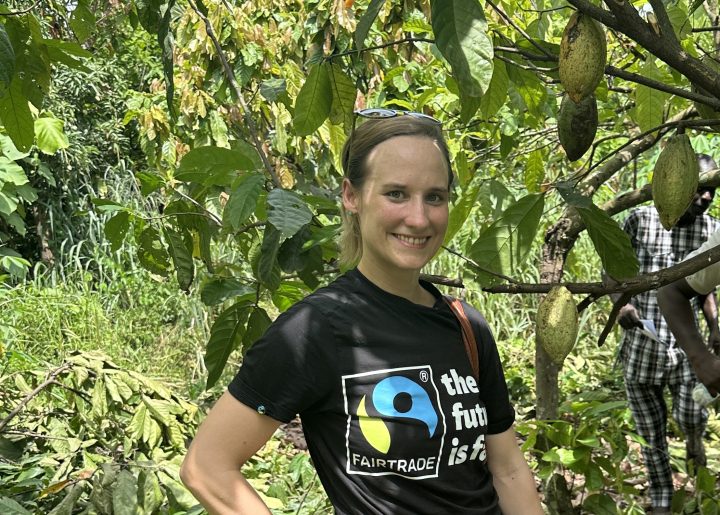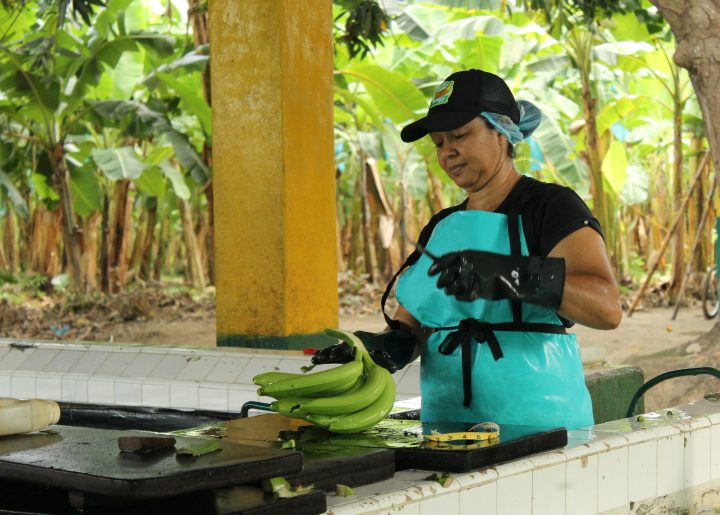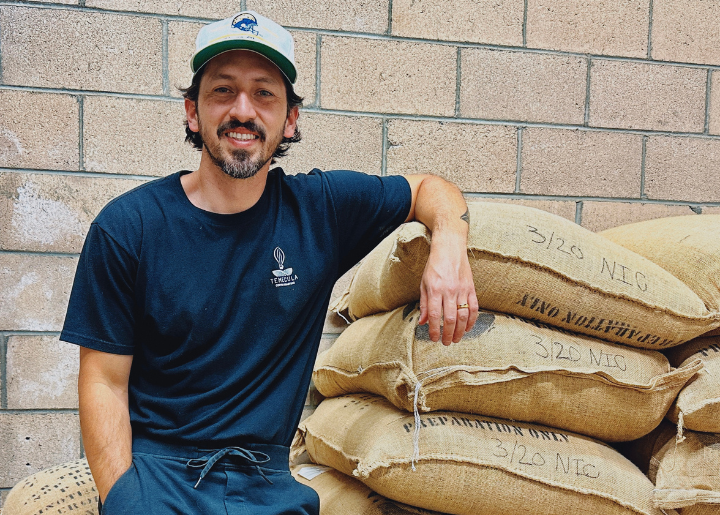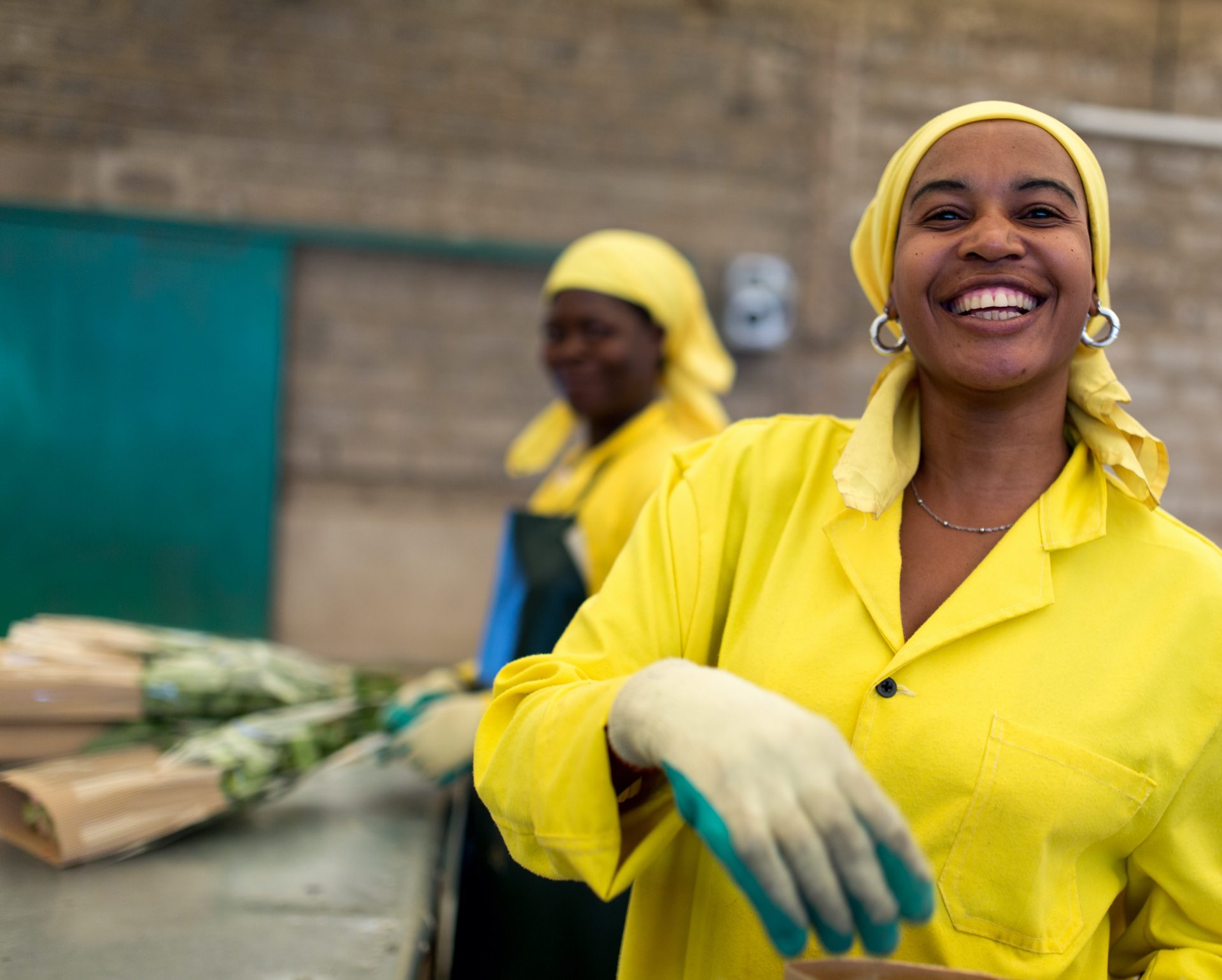Food as a moral problem
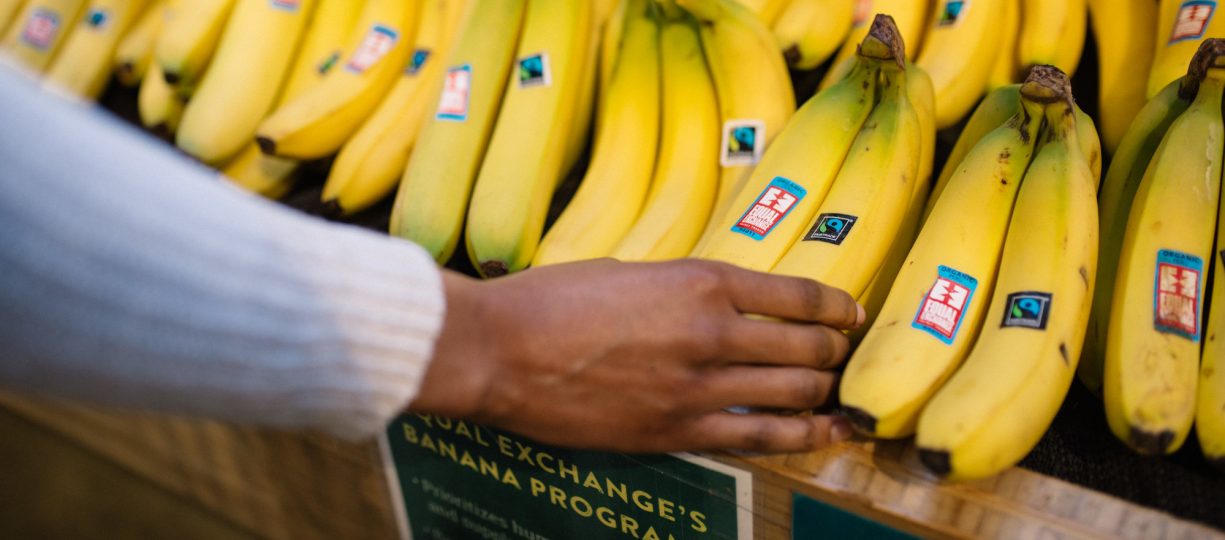
Do university dining services have a responsibility to serve fair and sustainable food? A Fairtrade take on Malcolm Gladwell’s recent Food Fight podcast.
Last week, Malcolm Gladwell staged a brutal takedown of Bowdoin College and the food they serve students, much of it delicious, healthy food grown in their on-campus organic garden. His arguments painted good food and accessible education as mutually exclusive. In his Revisionist History podcast episode, Food Fight, Gladwell juxtaposed Bowdoin with a similar-sized liberal arts peer, Vassar College – their rubbery pizza a depressing contrast to Bowdoin’s smashed chickpea, avocado, and pesto sandwiches. But, in one of his trademark ‘things-are-not-as-they-seem’ plot twists, Gladwell says, “The food at Bowdoin is actually a problem, a moral problem.”
In fact, Gladwell councils us to steer clear of any school like Bowdoin that puts more than the bare minimum toward food because every extra dollar takes from the financial aid pot keeping out disadvantaged students. In contrast, Vassar cares about poor kids, he claims, something far from the minds of the Bowdoin gourmands. They eat all that terrible pizza to make sure as much money as possible flows to financial aid.
Gladwell’s conclusion: schools with good food are elitist; schools with bad food are open. For students faced with bad food, Gladwell asks you to choke down those old grapes and soggy chicken nuggets with a smile on your face because “atrocious fresh fruit is a small price to pay for social justice.”
If this sounds simplistic, that’s because it is.
Campus food issues are much more complicted than “better food = less access for poor kids”. Gladwell sets up a false dichotomy between good food and financial aid.
We do agree on one point though – Food is a moral problem, and universities with their billions in endowments and tax-exempt status have a responsibility to do something about it, but for entirely different reasons than Gladwell lays out.
So, what’s the problem?
Food chain workers account for 1 in 5 jobs in the US, and over 1 billion people work in agriculture, worldwide. A university dining hall food chain includes everyone from the farmer driving the tractor, factory and warehouse employees, delivery drivers, and dining hall staff. Even something as simple as a banana arrives at the cafeteria fruit basket through a complex supply chain involving hundreds or even thousands of people.
Though food chain workers contributed $1.8 trillion dollars in goods and services to the US economy in 2012, 79 percent did not receive a single paid sick day, 60 percent reported routinely working more than 60 hours a week, and only 13.5 percent earned a living wage. As one of the most socioeconomically disadvantaged populations both in the US and worldwide, the children of people employed by the food sector are the very students who need more financial aid dollars.
Vassar’s approach to food isn’t unique. Currently, an estimated 90 percent of US colleges and universities source at least some of their campus food options from just three companies and their subsidiaries. While the big three do offer some sustainable and fair trade options, campus food often comes cheaply and heavily processed from large agribusiness, often to the detriment of food chain workers at all points along the supply chain, including eaters.
Cheap food isn’t cheap in the long run; the costs to society through soil degradation alone are mind boggling with 24 billion tons of soil lost to erosion yearly, and farmers spending more on fertilizer and irrigation to eke crops from depleted soils. More than any other industry, universities – founded on pursuit of knowledge and asking hard questions – have no excuse to avoid questioning ‘why is food so cheap?’
Take bananas for example, one of the cheapest fresh items in the grocery store and a fruit that even the worst cafeterias offer. Plantations in Ecuador, banana capital of the world, routinely fumigate fields with pesticides banned in the US and Europe. Workers can’t leave the fields during fumigation fly-overs, leaving many with debilitating side effects from repeated exposure (see Beyond the Seal, an excellent documentary on bananas). Bananas are so cheap only because buyers never pay for the externalities. By sourcing from conventional banana plantations, campus food services support environmental degradation and unsustainable wages for farm workers.
All this begs the question of what role higher education should play in society. In defending themselves from cynics, universities point to leadership, innovation in research, exploration of what it means to be human, and the importance of nurturing critical thinkers who can solve problems. But what of the institutions themselves and the behaviors they model for the student body? Virtually every academic discipline has something relevant to say about the food system, but most schools treat their food practices as a purely financial issue, rather than an opportunity to take a leadership role on sustainability.
Pushing Universities Toward “Real” Food
Universities have a responsibility to budget appropriately for sustainable food AND financial aid for low-income students. (Bowdoin fired back at Gladwell, arguing just that.) In the same way, kids of farmers, farm workers, and food industry employees shouldn’t have to rely on the charity of admissions departments to afford a decent education.
If universities really care about poor kids, they can’t justify supporting an industry that keeps its employees poor and dependent on unstable, low-wage jobs. Abdicating responsibility on either count just isn’t good enough for tax-exempt institutions commanding endowments in the tens of billions of dollars.
Our friends at Real Food Challenge are currently working with students and universities to shift campus dining options to better reflect the kind of leadership that goes beyond the academic to make a practical positive impact on our food system. As their name suggests, Real Food Challenge supports “real” food – meaning food that’s good for the planet; the workers who grow, pack, and serve it; and the students and staff who eat it. The organization offers resources and training to help student activists bring more real food to their dining halls and for faculty and staff on how to tap into sustainable food procurement.
Real Food Challenge’s impact stretches beyond campuses and into surrounding communities, as well. For example, the chapter at Northwestern University has been working to bring Fairtrade bananas to their cafeteria; as a result, Fairtrade bananas will be available for the first time in the Midwest. Northwestern should be proud of the way their students’ activism is opening a new market for Fairtrade banana growers. Other universities should look to their example of university leadership in sustainability directly translating to community impact, and channeling both university and community dollars toward farm safety, improved environmental management, and living wages for workers.
Malcom Gladwell is right –
Food is a moral problem, just not the way he thinks.
In choosing our food, we choose the world we want. Universities have billions to spend, to paraphrase Spider Man, that accords them great power and great responsibility to make food choices that support sustainability and fairness. In a highly-interconnected food web, we can never make perfect choices with every result perfectly mapped out, but Gladwell is right in thinking that every bite counts. Food isn’t produced in a vacuum, and every dollar spent on food has far reaching consequences. But one thing’s for sure:
Rubbery pizza isn’t a simple way to make the world a fairer place.
—-
Are you a student or a student’s parent or university staff or a professor? Use your access to the university system to push dining services toward real food.
Topics
We’re in this together
Fairtrade America partners with brands on the journey to certification and beyond. We can help with everything from finding a certified supply chain to marketing your newly certified product.
Get in Touch
